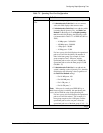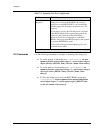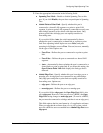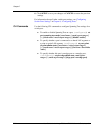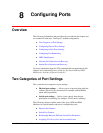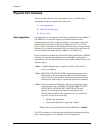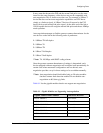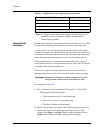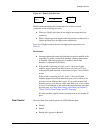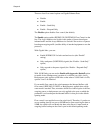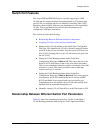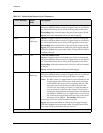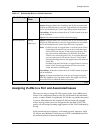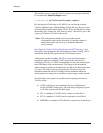
Document No. 10-300077, Issue 2 8-3
Configuring Ports
It may seem that because the FLP and the normal link pulse use the same
interval at the same frequency, older devices may not be compatible with
auto-negotiation. This is, however, not the case. For example, a 10Base-T
device that does not have auto-negotiation capabilities sees FLP bursts
simply as a link test signal. A 10Base-T device will respond to the FLP
burst with its usual normal link pulse signal. At the other end of the link, a
10/100-capable device will recognize normal link pulse and choose 10Mbps
mode operation.
Auto-negotiation attempts to find the greatest common denominator for the
two devices on the link in the following order of preference:
1. 100Base-TX full-duplex
2. 100Base-T4
3. 100Base-TX
4. 10Base-T full-duplex
5. 10Base-T half-duplex
* Note: T4: 100 Mbps with 8B/6T coding scheme
Once the greatest common denominator of settings is determined, each
device equipped with auto-negotiation will configure itself automatically. In
certain cases where automatic configurations are not desired, auto-
negotiation provides a way for these settings to be overridden manually.
* Note: Auto-negotiation should be disabled only on 50-series modules
that have remote fault detection enabled. Do not disable auto-
negotiation on 80-Series gig links.
Table 8-1 lists the gigabit modules that do not support auto negotiation:
Table 8-1. Gigabit Modules not Supporting Autonegotiation
Gigabit Module Model Number Hardware Revision
M5502-1000SX-F M or earlier
M5502-1000LX-F M or earlier
M5502-1000SLX-F F or earlier
M5504-1000SX-F H or earlier
M5504-1000LX-F H or earlier
M5504-1000SLX-F H or earlier
1 of 2



